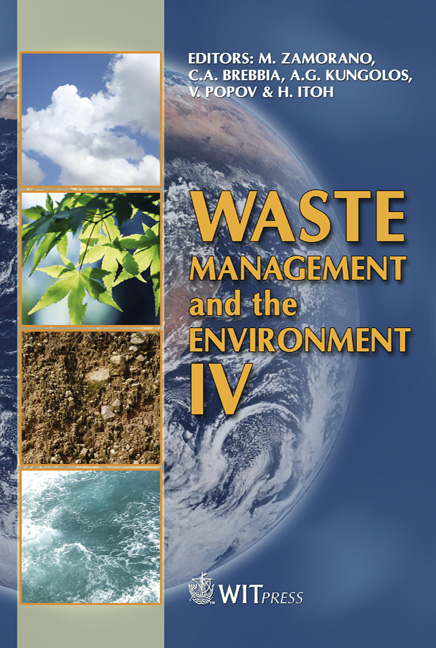Basic Research On The Formation Characteristics Of Nitrated Polycyclic Aromatic Hydrocarbons In The Combustion Process
Price
Free (open access)
Transaction
Volume
109
Pages
9
Page Range
269 - 277
Published
2008
Size
458 kb
Paper DOI
10.2495/WM080291
Copyright
WIT Press
Author(s)
K. Yasuda, N. Ishikawa, M. Watanabe, Y. Noma & K. Kawamoto
Abstract
Nitrated polycyclic aromatic hydrocarbons (nitro-PAHs) are widespread environmental pollutants that are generated by incomplete combustion. Many nitro-PAHs compounds are potential genotoxins and some are direct acting mutagens. Laboratory experiments using PAHs(pyrene, antracene and napthalene) in gas with coexisting nitrogen oxide and oxygen were conducted to elucidate the formation and decomposition behaviors of nitro-PAHs in the heating-reaction tube. It was found that the nitro-PAHs formed in a wide range of temperature from around 200–1000°C, and that the concentrations of most the nitro-PAHs decreased with increasing heating temperature (700–1000 °C). Keywords: heating-reaction tube, polycyclic aromatic hydrocarbon, nitration, formation characteristic, temperature dependence. 1 Introduction Nitrated polycyclic aromatic hydrocarbons (nitro-PAHs) have been a focus of considerable concerns as potential mutagens and carcinogens [1]. Once released into the atmosphere, nitro-PAHs are highly persistent in the environment and can be transported long distances from their original sources [2,3]. Nitro-PAHs in the environment originate mainly from direct emissions from combustion sources, especially from diesel exhaust1. Nitro-PAHs emissions from municipal solid waste (MSW) incinerators have been studied using bioassays [4–7]. The results of quantitative analysis of nitro-PAHs in emissions of MSW incinerators have also been reported [8,9]. In these studies, however, a limited number of
Keywords
heating-reaction tube, polycyclic aromatic hydrocarbon, nitration, formation characteristic, temperature dependence.





